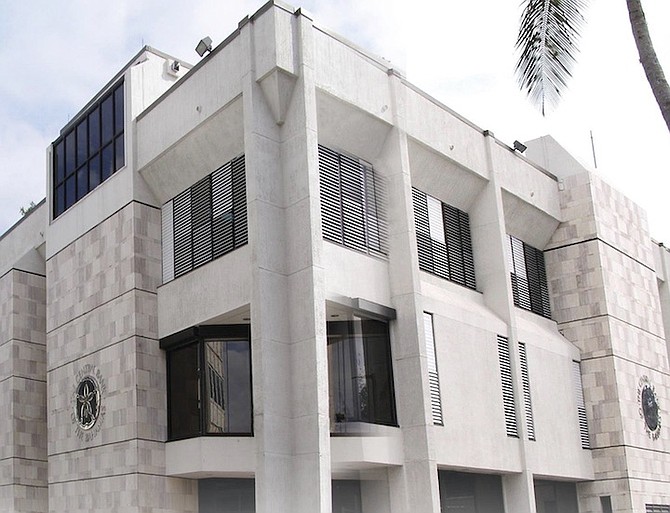By NEIL HARTNELL
Tribune Business Editor
nhartnell@tribunemedia.net
The Bahamas received almost three million tourist arrivals during the 2022 first half, it was revealed yesterday, with June’s numbers just 16 percent down on the record-breaking pre-COVID pace set in 2019.
The Central Bank of The Bahamas, unveiling its monthly economic assessment for July, reported that tourism’s post-pandemic recovery momentum was maintained although total visitor arrivals remain somewhat short of the trajectory that took this nation to 8.2m tourists in 2019 despite the devastation inflicted by Hurricane Dorian.
“On a year-to-date basis, total arrivals rebounded to 2.998m compared to 413,653 in the corresponding 2021 period, when a 75.7 percent contraction was registered. Underlying this outcome, air arrivals rose to 734,976 passengers, extending the 2.2 percent gain in the preceding year, supported by growth in all major source markets. Further, sea arrivals increased to 2.263m visitors, following a 95.9 percent fall-off in 2021,” the Central Bank said.
“Official data provided by the Ministry of Tourism showed that total visitor arrivals by first port of entry rose to 562,485 in June from 135,092 visitors in the comparative period of 2021. Contributing to this development, the dominant sea segment expanded to 421,225 visitors from 21,903 in the prior year. Similarly, air traffic increased to 141,260 from 113,189 in the previous year, restoring 83.9 percent of the volumes registered in 2019.
“A breakdown by major port of entry revealed that total arrivals to New Providence more than tripled to 265,252 visitors in June from 83,314 in the corresponding period of 2021. Underlying this outturn, the air and sea segments both rose to 109,336 and 155,916 visitors, respectively,” it continued.
“Likewise, traffic to the Family Islands strengthened to 261,812 from 44,543 a year earlier, as respective air and sea passengers measured 29,040 and 232,772. Further, foreign arrivals to Grand Bahama increased to 35,421 from 7,235 in the previous year, owing to gains in the air and sea components to 2,884 and 32,537, respectively.”
The Central Bank added that total visitor arrivals for the 2022 first-half had increased more than seven-fold compared to the same period in 2021, rising by some 624.9 percent, which comes as little surprise given that the prior year was still impacted by COVID-related restrictions, lockdowns, border closures and testing measures designed to combat the virus’ spread.
For the first six months of 2022, air arrivals more than doubled year-over-year, rising by 105.6 percent, while sea arrivals were ahead by 3,934 percent due to the near-total shutdown of cruise traffic with that industry only starting to resume sailing in June 2021.
Meanwhile, departures from Lynden Pindling International Airport (LPIA), the country’s primary aviation gateway, also more than doubled for 2022 to-date with a 107.6 percent increase for the seven months to end-July. US departures were up 87.4 percent, representing The Bahamas’ core market, while non-US departures jumped more than six-fold or by 570.9 percent as they were slower to re-open post-COVID.
“The most recent data provided by the Nassau Airport Development Company (NAD) indicated that, for the month of July, total departures - net of domestic passengers - advanced to 144,368 from 114,548 in the corresponding month of 2021,” the Central Bank said. “In particular, US departures accelerated to 129,181 from 109,454 in the prior year, while non-US departures grew to 15,187 vis-à-vis 5,094 in the previous year.
“On a year-to-date basis, total outbound traffic more than doubled to 775,852 from 373,787 passengers in the preceding year, a recovery from the 2 percent decline last year. Reflecting this outturn, US departures rose by 87.4 percent to 671,192 visitors, surpassing the 12.1 percent increase in the comparative period in 2021. Similarly, non-US departures accelerated to 104,660, a reversal from the 74.7 percent contraction in the corresponding period last year.”
As for short-term vacation rentals, data provided by AirDNA showed that total room nights sold for the seven months to end-July 2022 rose by 51.7 percent year-over-year while average daily rates (ADR) for “hotel comparable” properties jumped 12.1 percent. The average ADR rate for entire place listings increased by 8 percent year-over-year.
“In the short-term vacation rental market, data provided by AirDNA for July revealed ongoing gains,” the Central Bank said. “In particular, during the month, total room nights sold expanded to 170,904, from 129,708 in the corresponding 2021 period. Underlying this outturn, the occupancy rate for hotel comparable listings firmed to 55 percent from 54.1 percent a year earlier.
“Conversely, the occupancy rate for entire place listings declined marginally to 61.8 percent from 62.8 percent in the previous year. Further, price indicators showed that, year-over-year, the average daily room rate (ADR) for both entire place listings and hotel comparable listings grew by 7.7 percent and 8.3 percent to $538.01 and $195.88, respectively.”
The Central Bank, as a result, saw no need to change its economic outlook or monetary policy stance. “The domestic economy is expected to maintain its recovery trajectory in 2022, supported by further strengthening in tourism sector output. However, downside risks to the industry persist, as the emergence of new strains of the COVID-19 virus could potentially stall the progress made on the international health front and disrupt travel sector activity,” it added.
“In addition, rising energy costs could erode the travel industry’s competitiveness, while the major central banks’ counter-inflation policies could constrain travel spending capacity of key source market consumers. Nonetheless, new and ongoing foreign investment-led projects, combined with post-hurricane rebuilding works, are anticipated to provide stimulus via the construction sector, which will foster economic growth.”





Comments
Use the comment form below to begin a discussion about this content.
Sign in to comment
Or login with:
OpenID